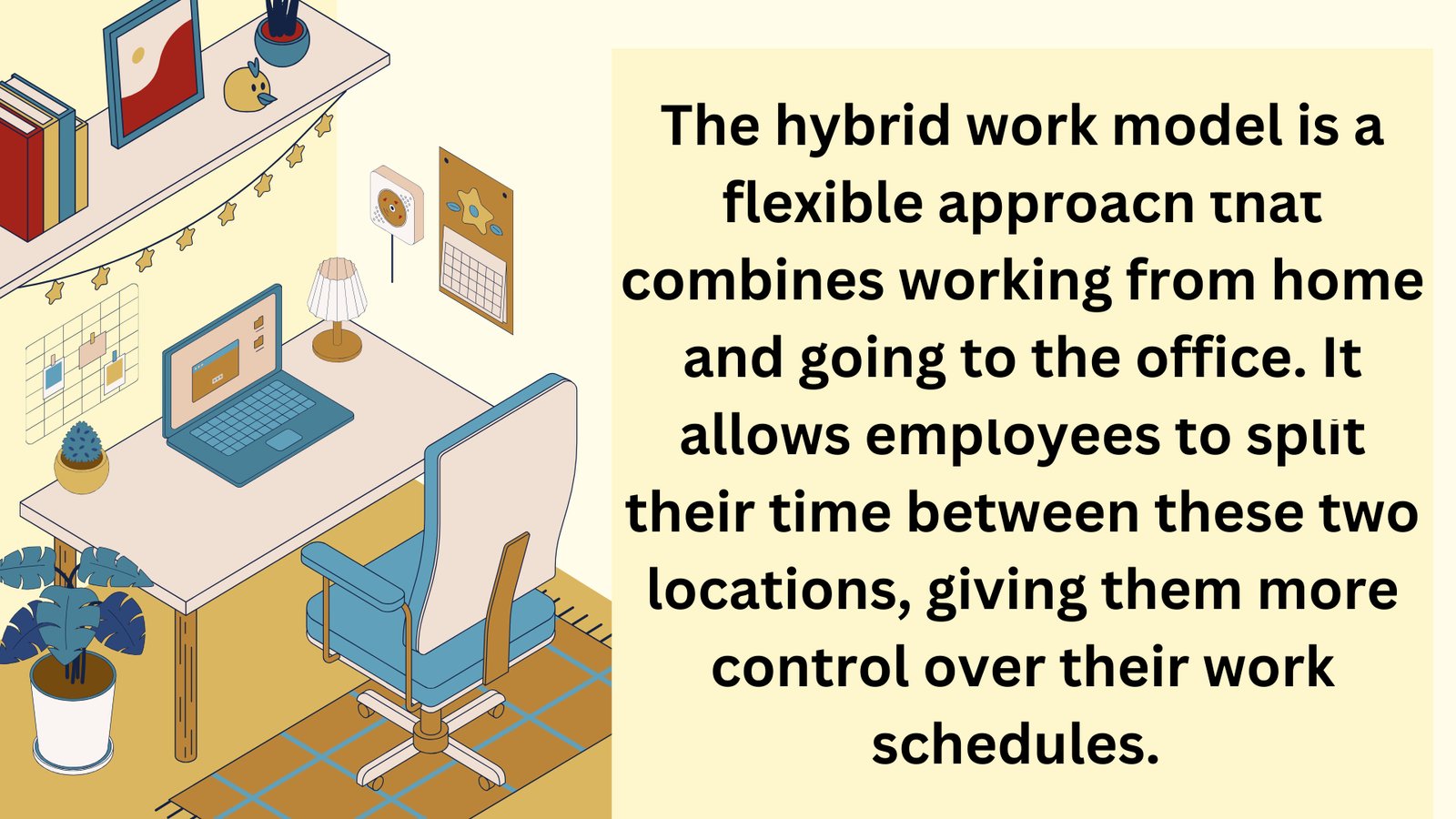
Table of Contents
Introduction
As the dust settles from the pandemic that altered workplaces worldwide, the hybrid work model is becoming popular for many organizations. But what exactly does it entail? While blending remote and on-site work seems like an ideal compromise, it comes with challenges and benefits. In this article, we’ll delve into the hybrid work model, exploring its pros and cons to help you understand whether it could fit your organization or career.
What is the Hybrid Work Model?

At its, the hybrid work model allows employees the flexibility to work both remotely and in-office. This setup often includes designated office days and remote workdays, catering to varied needs and circumstances.
Tailoring Work Schedules
- Flexibility: Employees can optimize their schedules around peak personal productivity times.
- Autonomy: Professionals may design a work environment that suits them best, balancing personal and professional obligations.
Technology-Driven
The seamless integration of technology is crucial in hybrid workplaces. Tools like video conferencing platforms, cloud-based project management, and communication apps connect teams regardless of location.
Advantages of a Hybrid Work Model
Improved Work-Life Balance
One of the main attractions of the hybrid work model is its potential to improve work-life balance.
- Reduced Commute: Eliminating daily commuting saves time and reduces stress levels.
- Flexible Arrangements: Employees can better manage family commitments or pursue hobbies, boosting overall satisfaction.
Enhanced Employee Productivity
Providing employees with the choice to work remotely can lead to increased productivity.
- Focus Time: Remote work minimizes office distractions, allowing for a deeper focus on complex tasks.
- Adaptable Working Conditions: Employees can tailor their environment to maximize comfort and effectiveness.
“When employees can choose where they work best, it often leads to better outcomes and job satisfaction.”
Broader Talent Pool
The hybrid model allows companies to cast a wider net when hiring.
- Geographical Diversity: Companies aren’t restricted to local talent, allowing access to diverse skills and perspectives.
- Increased Retention: Offering flexible work options can reduce turnover rates, saving time and resources on training and recruitment.
Challenges of the Hybrid Work Model

Proximity bias impacts career advancement
- Overcoming this bias requires intentional efforts to create equal visibility for all team members
- Remote workers often face unintended discrimination in promotions and opportunities
- In-office employees may receive more visibility and recognition from leadership
Potential Communication Gaps
Despite technological advancements, communication can suffer in hybrid settings.
- Misinterpretations: Written communication can sometimes lead to misunderstandings without visual or vocal cues.
- Disconnected Teams: Irregular office presence might hinder team cohesion and collaboration.
Managing Performance and Accountability
It can be challenging to assess performance fairly for remote and in-office employees.
- Visibility Bias: Managers might unintentionally favor employees who work on-site more frequently.
- Tracking Progress: Ensuring productivity measures focus on output rather than logged hours is essential.
Technological Dependence
The success of hybrid work hinges on reliable tech infrastructure.
- Security Risks: Home network vulnerabilities pose security threats to sensitive company data.
- Tech Fatigue: Over-reliance on virtual meetings and email can lead to burnout and decreased engagement.
Conclusion
The hybrid work model offers a promising blend of flexibility and in-person interactions but has hurdles. Whether choosing the best technological solutions, redefining corporate culture, or refining communication strategies, the hybrid work model demands thoughtful implementation.
Ultimately, the decision to adopt a hybrid workplace should stem from careful consideration of your team’s specific needs and circumstances. It’s about finding a harmonious balance that unleashes the potential of both remote and in-office work.




